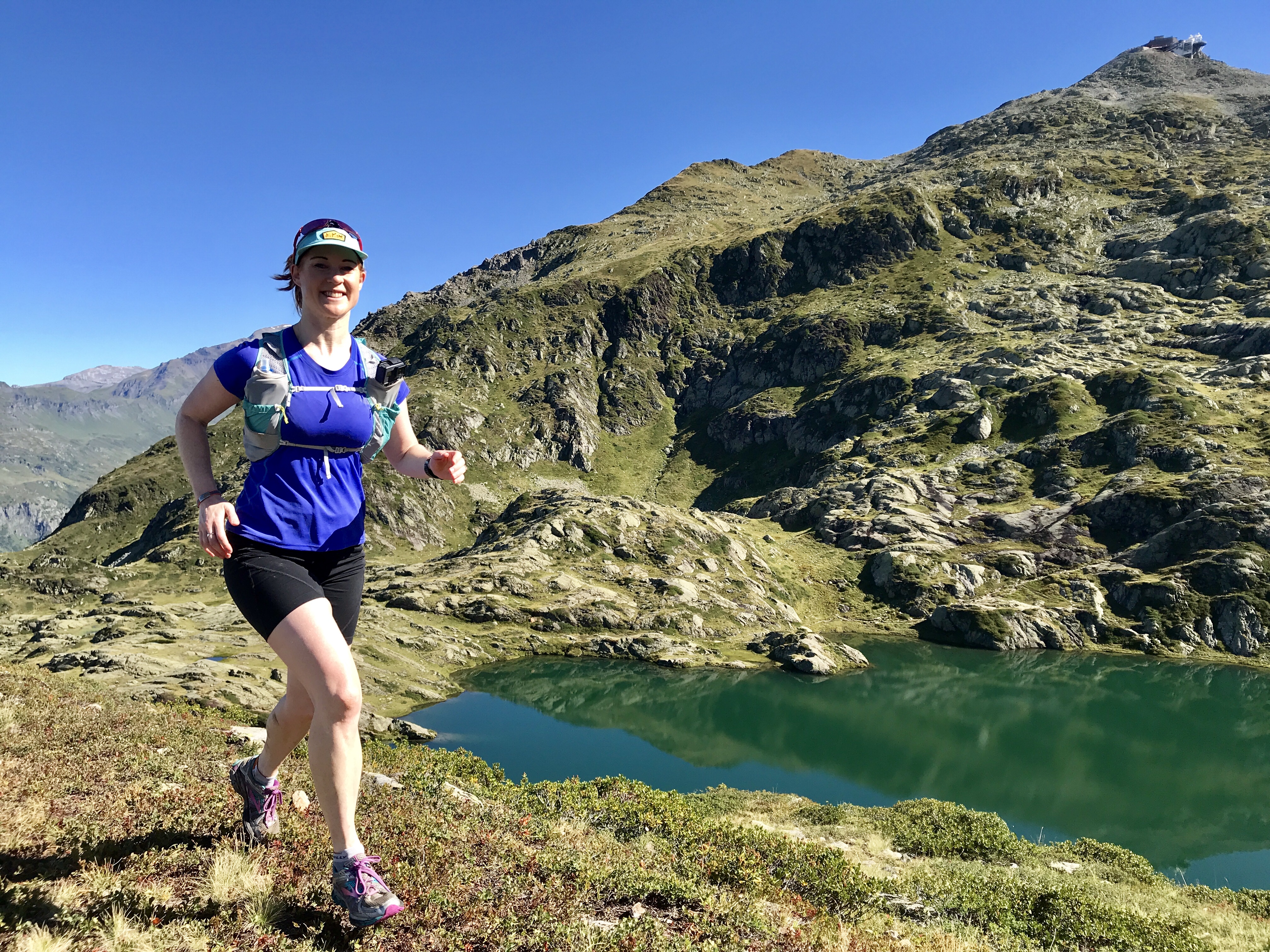I came last! Celebrating five ultra runners who made it to the finish line
In an ultra marathon, just finishing is a massive achievement – we celebrate the inspiring runners who never gave up

The thought of coming last in a race fills some people with dread. However, when you run an ultra marathon, the attitude is very different. In fact, the opposite can be true.
At these events, just completing the course within the allotted timeframe is considered an epic achievement because not only are you competing against the colossal distance, but also the weather, terrain, nutrition strategy and how and when you use your kit.
I once asked legendary mountain runner Kilian Jornet which runner inspires him most. I was expecting him to sing the praises of some other icon of the trails, but instead he said: “The last place runners and those at the back. They are on the course for twice as long as the winners if not more, so they are putting in so much effort and time into the race. This really inspires me.”
We spoke to five such inspirational ultra runners. Each one has come last at a famous UK ultra marathon: the Lakeland 100 (100 miles); the Spine Race (268 miles); Arc of Attrition 50 (50 miles); Ring of Fire (135 miles); and the Lakes Traverse 100k (62 miles). Congratulations to each one of them!
Katie Alexander, Lakeland 100, July 2024
100 miles with 20,669ft / 6,300m ascent through the Lake District, Cumbria
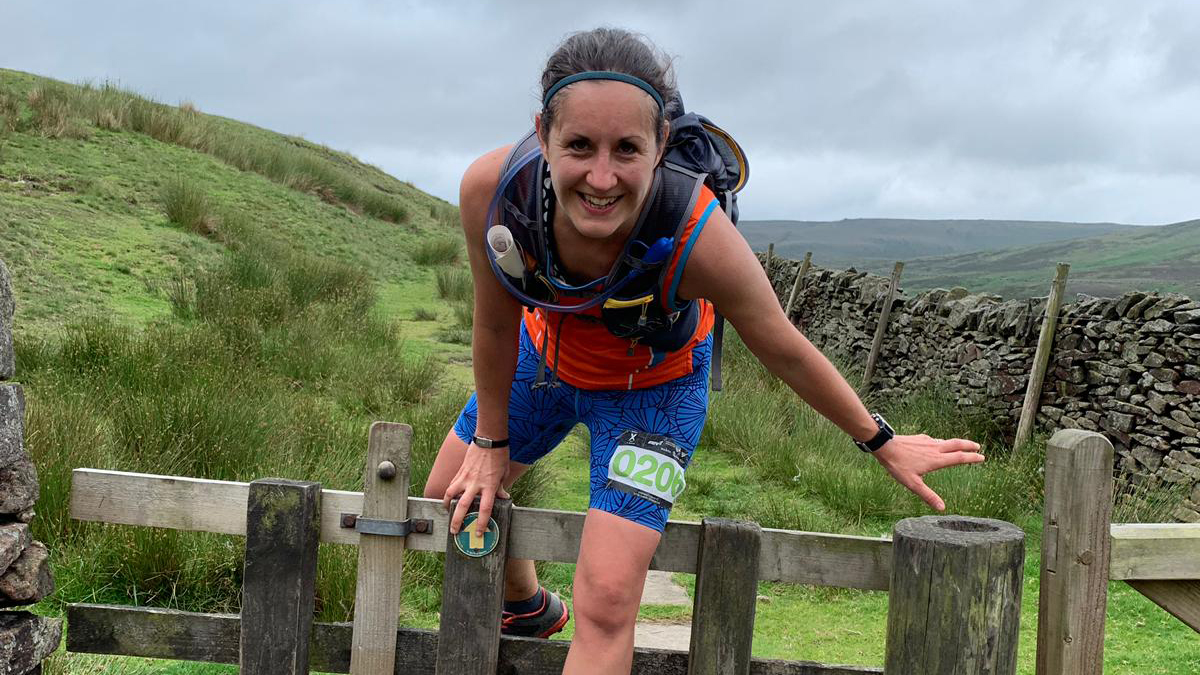
Running coach, sports massage therapist and mum of two Katie Alexander suffers from epilepsy, but doesn’t let it hold her back. With medication keeping her condition under control, she started running after buying her first house and getting a dog. She hoped to do her first marathon and get a good time before turning 30, but getting faster was getting harder so instead she turned to ultra running in 2015. This led to the Lakeland 50 in 2021 and three years later, the Lakeland 100.
“I always said I’d never do a 100 because I thought it was a step too far,” explains Katie. “But I watched the start of the 100 before I did the 50 and thought, ‘I want some of that!’ So I put my name in the ballot.
“I had to try really hard to fit in the mileage, strength, cross training and recovery. I live in the Peak District but they’re baby hills compared to the Lakes so I managed to recce parts of the course a couple of times. I was lucky I had a lot of support around me to get the training done.”
“As we came down into the finish at Coniston the marshals came up saying, ‘You’re the last official finishers and we’ve started the awards.’ The finishing marquee was full of everyone there and the volunteers formed a guard of honor for us to walk through, there was all this noise and colors and it was all a bit overwhelming after being out in the remote mountains for such a long time!
“With it being such an epic race, I am quite proud actually. You’re not the last finisher, you’re the last person who carried on. I just didn’t give up even though there were times when I really wanted to. I’m proud of the mental strength that it took to get round.”
Lizzie Hughes, Arc of Attrition 50, January 2023
50 miles with 7,545ft / 2,300m ascent, South West Coast Path, Cornwall
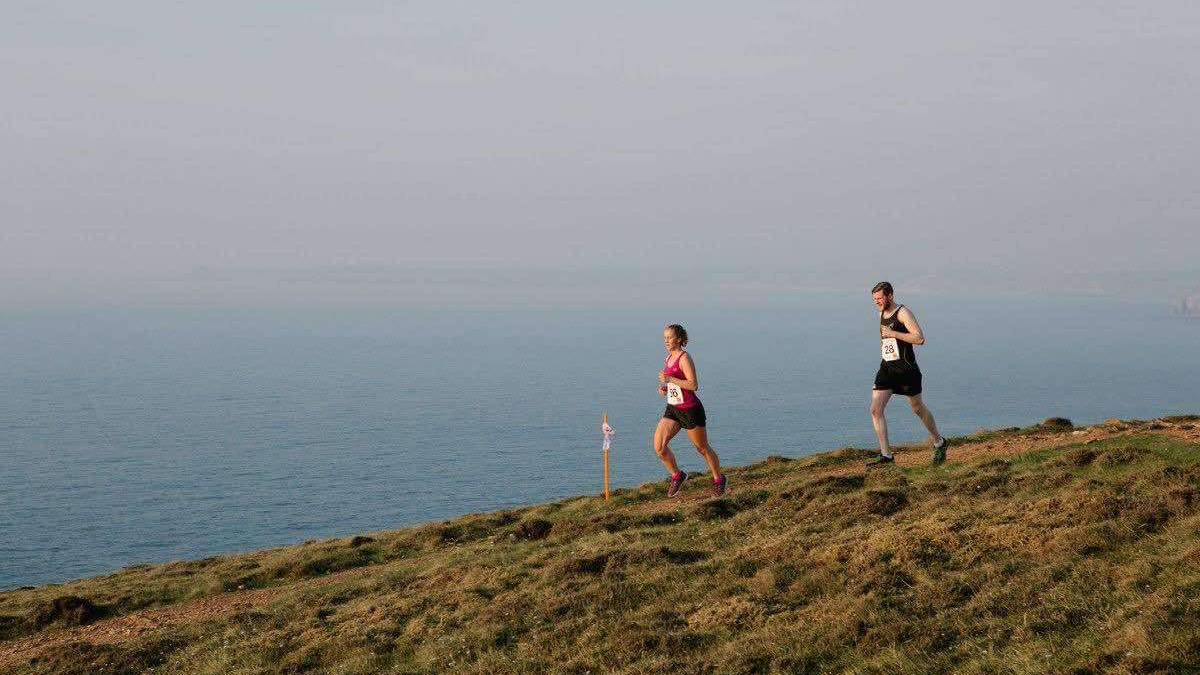
Lizzie Hughes is a lifelong runner, school teacher and mum to two small children. The Arc of Attrition route is right on her doorstep in Cornwall, but her busy job and family commitments didn’t give her a great deal of time to train.
“I didn’t have a weekly mileage or ascent to hit,” Lizzie explains. “I just recced challenging parts of the coast path in the north of Cornwall. I worked out the minimum pace that I could travel at to get round ahead of the cut offs and went faster on the other sections when I could.
“I knew I hadn’t done enough training, and my male friends also kept telling me that, but they are dads who had a totally different role in their household – so I thought, ‘I’m going to show you!’ That was part of my driving force the entire time. I realized I was last when I saw the sweepers behind me, about a mile from the finish. I didn’t know which way to turn at a road junction – and they weren’t allowed to help me!
“I met my husband with half a mile to go and said, ‘I can’t do this! I want to go home!’ and he said, ‘Well we can but your nieces are there with a huge sign saying Go On Auntie Lizzie!’ So I had to carry on! Seeing them was incredible, and I suddenly I heard over the tannoy, ‘We’re expecting our last finisher now, Lizzie Hughes, she’s got X number of minutes to get here.’
“I crossed the line with 90 seconds to spare. I hugged the organizer and said, ‘I’m so embarrassed!’ And she was so supportive and said I’d done an amazing job and they were so proud of me, which made me feel really positive. And then you look back on the race and you think, ‘First, last, whatever – what a flipping race!’ And you realize that actually that is amazing and what you have achieved is fantastic.”
Graeme Brouder, Spine Race, January 2024
268 miles with more than 32,808ft / 10,000m ascent along the Pennine Way, England
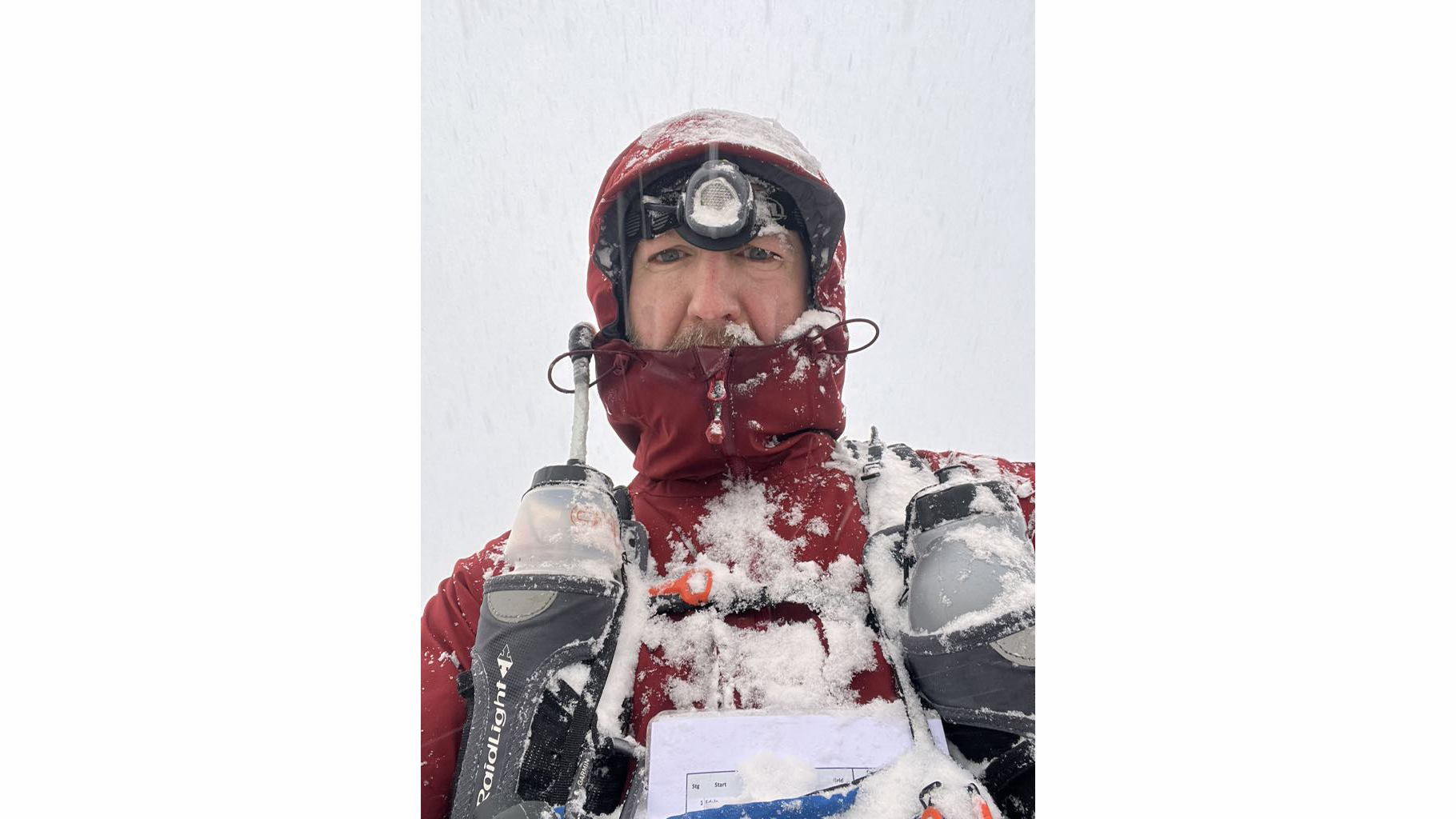
Graeme Brouder started running in 2010 when he was a heavy smoker and drinker. After his first child was born he decided to get fit, walk-running a 10k but not being able to imagine running the whole thing without stopping. Two children later it’s safe to say he’s turned that around slightly, losing five stone and getting his marathon time down to 3:40 by 2012. Then he started on ultras…
Graeme says, “My first ultra over the 30-mile mark was the 76-mile ONER which was horrendous and I hated every minute of it, I think I cried for the last mile. My first 100 miler attempt was UTSW (Ultra Trail South West) in 2012. I DNFed at about 90 miles then tried the Cotswold Way Century about six times, finally completing it in 2022 – in last place as well! Then I decided to do the Spine and I massively underestimated it.
“I stupidly looked at my 100-mile time and thought I’d be doing 3mph, finishing within 140 hours with a day free at the end! The reality of it was that it’s borderline PTSD territory. I managed about eight hours sleep in almost seven days, three hours within the cut-off. Sleep deprivation was the hardest bit, but I wasn’t going to stop.
“I’m really proud of completing the Spine Race because it’s a fair old challenge and I didn’t have much time to train for it around work and family. It doesn’t bother me at all to come last. I couldn’t care less if I was 20th or 80th. Not one person has said to me, ‘Where did you come?’ No one’s interested in that. When you get to this type of distance it’s only about finishing.”
Terry McCormick, Ring of Fire, Aug/Sept 2023
135 miles in three days with 13,123ft / 4,000m total ascent around Anglesey, North Wales
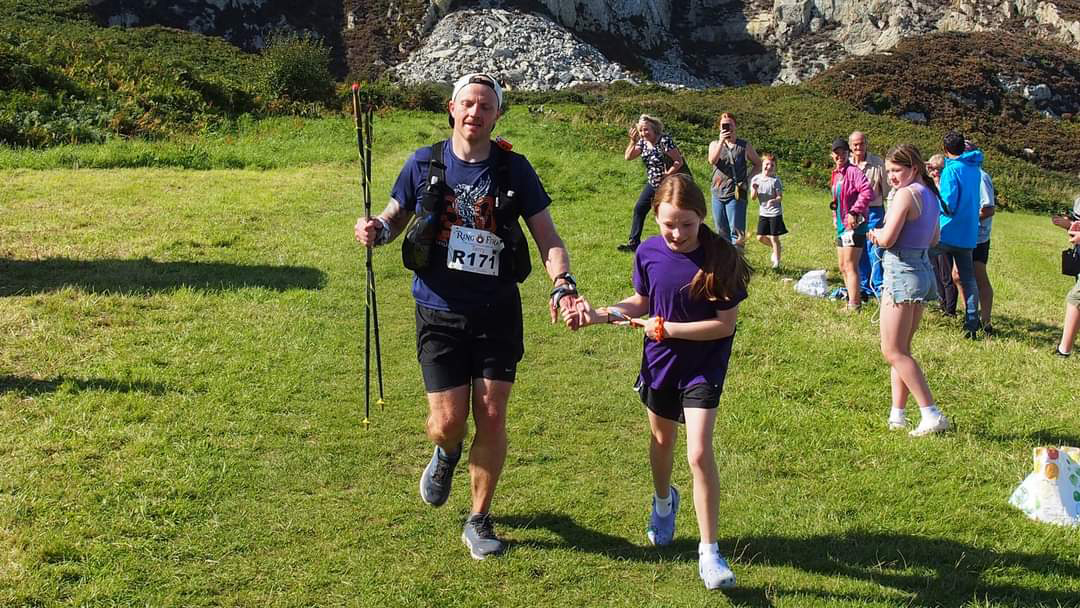
Terry McCormick, a dad of two from Liverpool, was a semi-pro footballer for 15 years, but after retirement to a ‘normal’ job he put weight on. He found a running club that met next to his children’s dance school, then chatting to fellow runners he found out about ultra running and got hooked!
Terry says, “Once you surround yourself with other runners and normalize the distances, people are running 50, 60, 100 miles, 200 miles and that really helped me move into the ultra distances. When I turned 40 in 2023 I wanted to do an event every month fundraising for Alder Hey Children’s Hospital in Liverpool. A friend told me about the Ring of Fire, I watched the video and thought, a bit naively, I’ll give that a whirl. I did go into the race relatively confident about my training and I wasn’t worried about the cut offs, but the race didn’t quite pan out that way!
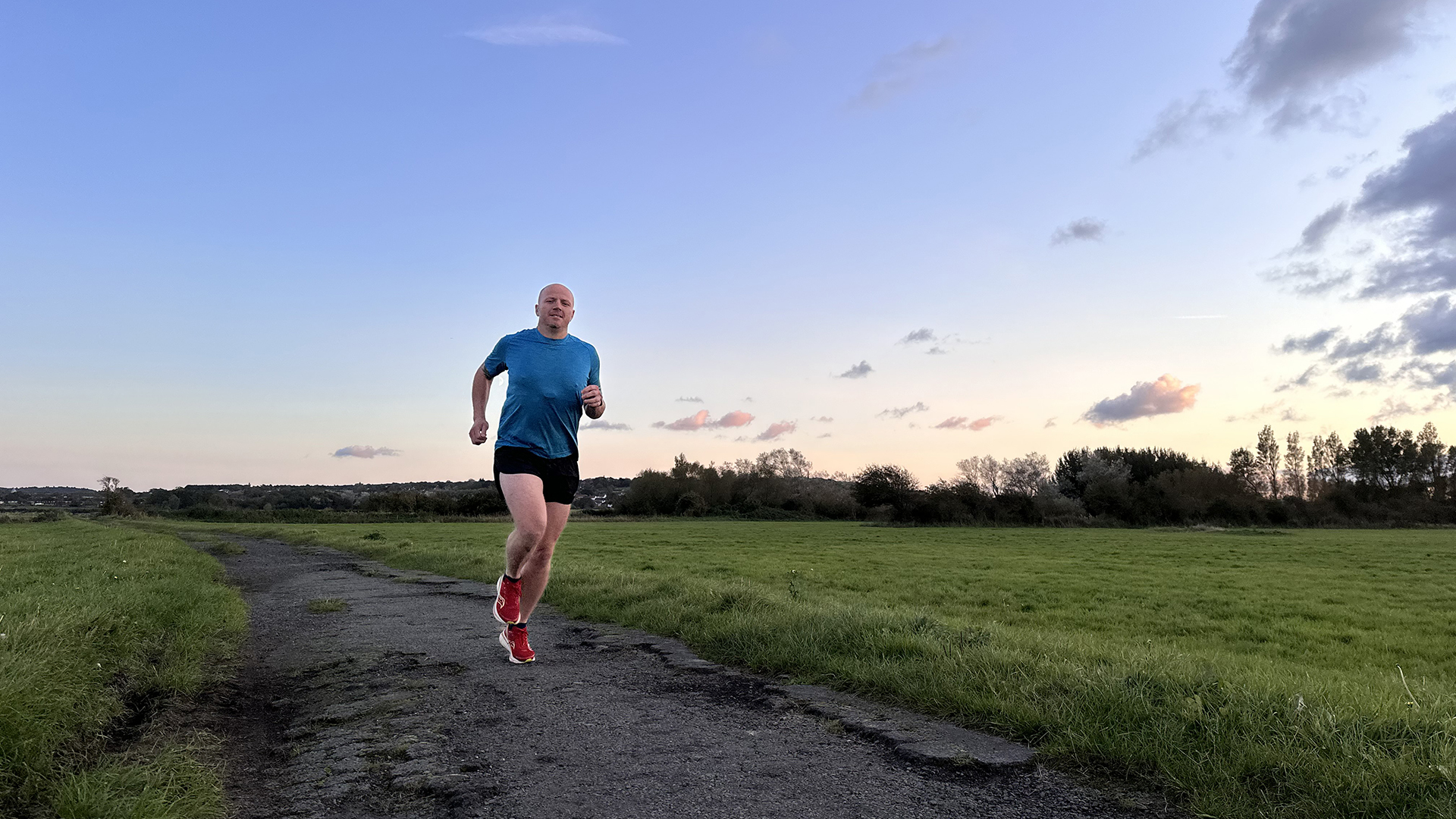
“Because it’s a cumulative time over three days I wasn’t physically last on any day, but it was stressful getting to the cut offs. The first day was super-hot and after 4-5 miles my stomach took a bit of a dive. I finished the day with about 10 minutes to spare, but after a good night’s sleep and porridge I felt ready to tackle day two. But then I had another issue – after 25 miles my little toe was really suffering, swollen and red raw. I swapped my socks and trainers but I was five minutes off the cut off, so I had some painkillers and put it out of my mind. Running alongside others helped but I didn’t know about day three. In the morning I lanced it and taped it and that made all the difference.
“It was enough to get me through the final day and my daughter dragged me over the finish line. The race was beautiful and the competitors amazing.”
Caroline Johnson, Lakes Traverse, April 2024
62 miles / 100km with 11,482ft / 3,500m ascent across the Lake District, Cumbria
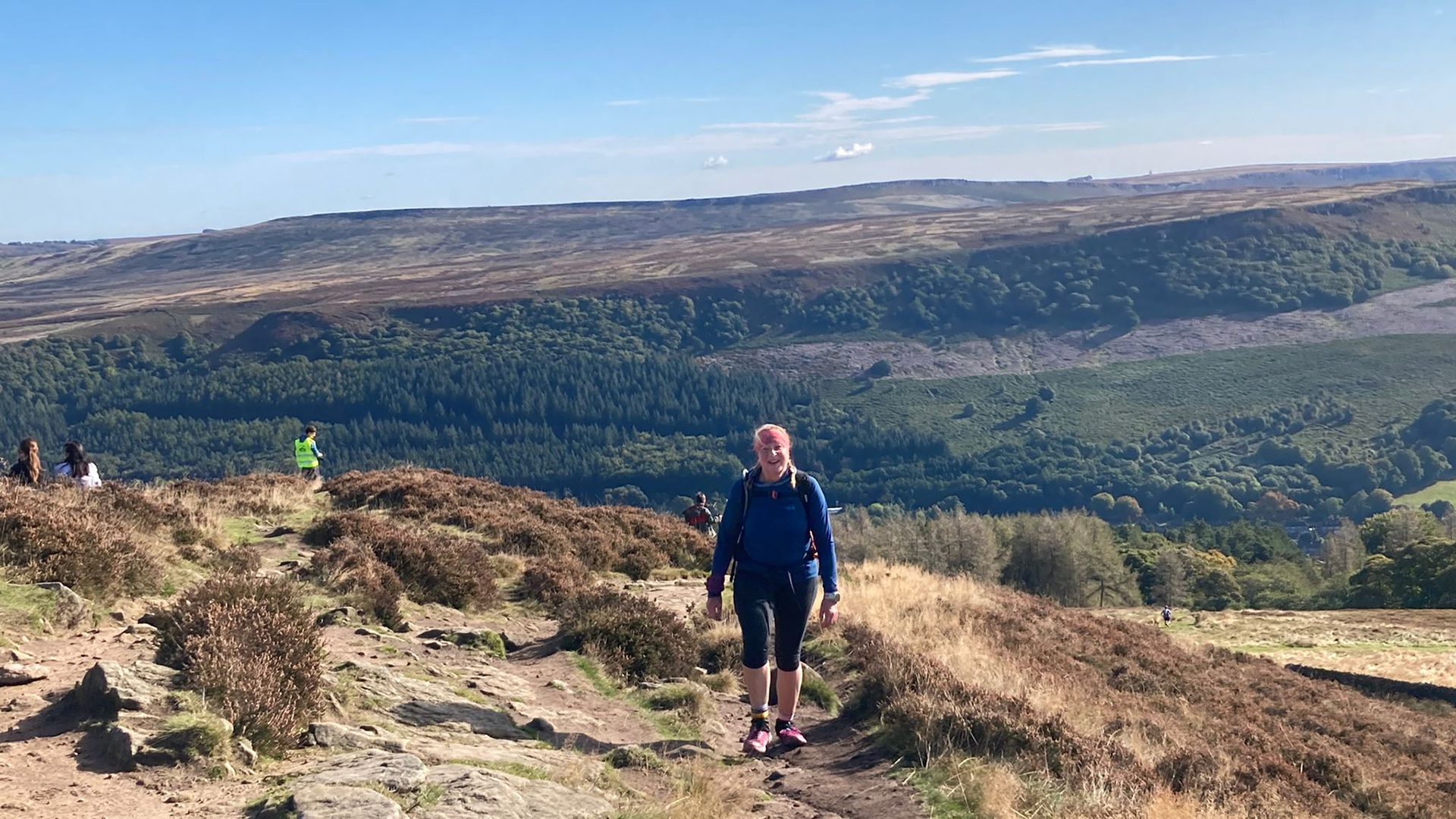
Former hockey player Caroline Johnson couldn’t understand why anyone would want to do more than a half marathon. Then after a glass of wine – or two – one evening, she found herself signed up to the Lakeland Trails 55k. That was her first ultra, aged 40. She still doesn’t call herself a runner (adding weight to the theory that ultra running needs a rebrand to ultra run-hiking), but this year she completed the Lakes Traverse 100k ultra where she was the last female finisher.
Caroline says, “Once I’d signed up to the 55k event I became slightly obsessed with watching and reading everything I could about ultra running. I found the training hard but I was so terrified about what the race involved that I followed my training plan religiously. And I had a great time!
“I’m not a big runner – I walk a lot, and I only have one pace whether I’m doing a 5k or an ultra. On the Lakes Traverse, the most difficult thing was running to the first checkpoint to give myself time in the bank. Once you’re through that, the cut offs are generous.
“I didn’t worry about coming last to be honest; I was just focused on what I was doing and not getting lost in the night section. I felt a bit emotional crossing the finish line, with my partner and the dog there to greet me, I think because it was the longest race I’d done and the longest time I’d been out.”
The co-founder and former editor of Trail Running magazine, Claire now runs the YouTube channel Wild Ginger Running, creating films about trail- and ultra-running advice, inspiration, races and gear reviews. An award-winning journalist, writing for outdoor and adventure sports magazines and websites, Claire's first book, The Ultimate Trail Running Handbook (5k to 50k), is out now. Her second, The Ultimate Ultra Running Handbook (50k to 100 miles), is out Autumn 2024. Claire also speaks and presents at events and races.
